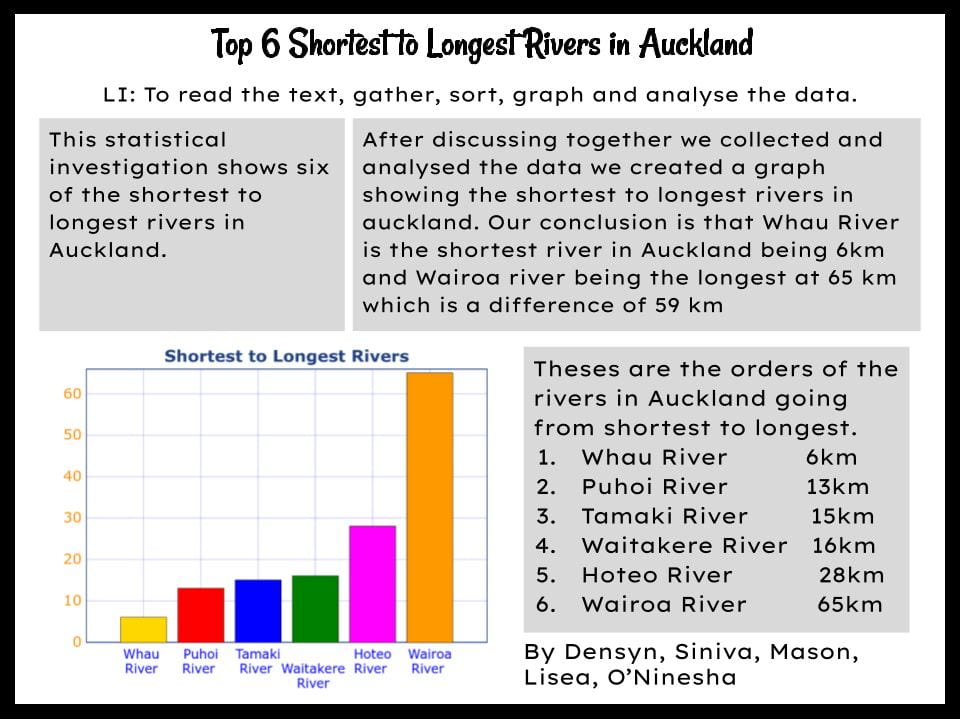LI: To read the text, gather sort, graph and analyse the data

Our maths group created a diagram which shows the top six rivers in Auckland from smallest to largest. We used our collaborative skills to find out the data of each river. We put these rivers in this order from shortest to longest ( Whau River, Puhoi River, Tamaki River, Waitakere River, Hoteo River, and Wairoa River. We used our knowledge to come to the conclusion on what river is the longest out of the 6 rivers in Auckland, which is Wairoa River.
I found this activity was amazing because my group and I were collabrating and sharring our disscusions with each other which helped us with our bargraph.